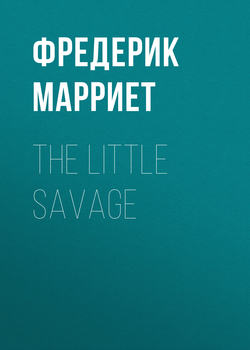Читать книгу The Little Savage - Фредерик Марриет - Страница 2
INTRODUCTION
ОглавлениеThere is a reference, in The Life and Letters of Captain Marryat by his daughter Florence Marryat, to "The Little Savage, only two chapters of the second volume of which were written by himself."
This sentence may be variously interpreted, but most probably implies that Marryat wrote all Part I (of the first edition) and two chapters of Part II, that is—as far as the end of Chapter xxiv. The remaining pages may be the work of his son Frank S. Marryat, who edited the first edition, supplying a brief preface to Part II:—
"I cannot publish this last work of my late father without some prefatory remarks, as, in justice to the public, as well as to himself, I should state, that his lamented decease prevented his concluding the second volume."
"The present volume has been for some time at press, but the long-protracted illness of the author delayed its publication."
The Little Savage opens well. The picture of a lad, who was born on a desert island—though of English parents—and really deserves to be called a savage, growing up with no other companionship than that of his father's murderer, is boldly conceived and executed with some power. The man Jackson is a thoroughly human ruffian, who naturally detests the boy he has so terribly injured, and bullies him brutally. Under this treatment Frank's animal passions are inevitably aroused, and when the lightning had struck his tyrant blind, he turns upon him with a quiet savagery that is narrated with admirable detachment.
This original situation arrests the reader's attention and secures his interest in Frank Henniker's development towards civilisation and virtue. His experience of absolute solitude after Jackson's death serves to bring out his sympathies with animals and flowers; while, on the arrival of Mrs Reichardt, he proves himself a loyal comrade under kind treatment.
It is much to be regretted that Marryat did not live to finish his work.
R. B. J.
The Little Savage originally appeared in 1848-49. Marryat, who was born in 1792, died at Langham, Norfolk, August 9, 1848.
The following is the list of his published works:—
Suggestions for the Abolition of the Present System of Impressment in the Naval Service, 1822; The Naval Officer, or Scenes and Adventures in the Life of Frank Mildmay, 1829; The King's Own, 1830; Newton Forster (from the Metropolitan Magazine), 1832; Jacob Faithful (from the Metropolitan Magazine), 1834; Peter Simple, 1834; The Pacha of Many Tales, 1835; Midshipman Easy (from the Metropolitan Magazine), 1836; Japhet in Search of a Father (from the Metropolitan Magazine), 1836; The Pirate and The Three Cutters, 1836; A Code of Signals for the Use of Vessels employed in the Merchant Service, 1837; Snarleyyow, or The Dog Fiend, 1837; A Diary in America, with Remarks on its Institutions, 1839; The Phantom Ship, 1839; Poor Jack, 1840; Olla Podrida (articles from the Metropolitan Magazine), 1840; Joseph Rushbrook, or The Poacher, 1841; Masterman Ready, or The Wreck of the Pacific, 1841; Percival Keene, 1842; Narrative of the Travels and Adventures of Monsieur Violet in California, Sonora, and Western Texas, 1843; The Settlers in Canada, 1844; The Mission, or Scenes in Africa, 1845; The Privateer's Man, 1846; The Children of the New Forest, 1847; The Little Savage (posthumous), 1848-49; Valerie (posthumous), 1849; Life and Letters, Florence Marryat, 1872.
